It concerns a female statuette discovered in March 2006 in the locality of Vicofertile, a peripheral fraction of the municipality of Parma (in the south-western area of the city, towards the hills), as a grave goods for a woman of around 40, in a site referable to the Square Mouth Vase culture (widespread in Northern Italy), datable to the 4th millennium BC The context of the find is very particular: the burial of the woman is in an almost central position with respect to 7 male burials, one of a child of 8 -20 years old with two polished stone axes, one belonging to a young man of 30-20 years with an obsidian blade and a small ax while the last two are occupied by two young people, always aged between 30 and 300, without of grave goods and more spaced from the others; the bodies of the deceased are all placed in simple oval-shaped pits, in the typical Neolithic position, curled up on the left side, with the head to the east and the face to the south. The area under investigation was extended to a surface of only 50 mXNUMX and beyond these five pits, which occupy an area of about XNUMX mXNUMX, other empty pits were found. The area deserves further investigations, extended to a larger area, since the findings suggest the presence of a Neolithic settlement.
In addition to the statuette, the funerary equipment of the woman also includes a vase of the type with a square mouth and an olla of the type from Serra d'Alto (archaeological site of Matera), both without decoration. The statuette was placed on the left forearm, in front of the face of the deceased and depicts a seated woman, with an oval and flat face and her hair loose on her shoulders; on her face horizontal slit eyes are represented, with the nose added in a very prominent triangular shape, while her mouth is not indicated. Her torso is triangular, shaped at the front and flat at the back, with the legs bent at the knee almost at right angles as if to fit a seat with a back that has never been found (perhaps because it was made of perishable material); her breasts are flat, marked by a triangular hollow; her arms are thin, detached from the torso and bent at the waist with hands joined.
Traces of white were found on the surface, scattered in various parts of the body, indicating that the statuette was not entirely painted, but rather covered in white, perhaps the residue of a finishing operation carried out after firing. The figurine was made with a black ceramic mixture, different from that used for the pottery, as it has numerous micro-fractures, a symptom of an imprecise manufacture, atypical for the time, characterized by a very rigorous vascular production. A more accurate investigation has allowed us to confirm that this was made on site, in three blocks molded separately (bust, head and lower portion) and then assembled; the details that identify the figurine are very accurate in contrast to the presumable drying, cooking and cooling times which resulted in a less valuable workmanship, probably due to the need to complete the object during the burial ritual of the deceased .
The characteristics of this statuette, the rigidity and thinness, the absence of the mouth, the large prominent nose like a beak recall the canons of the bird goddess indicated by Marija Gimbutas the Lady of Life, Death and Rebirth, the Mother Earth from which he dies and the vegetation is reborn every year. In the context of the discovery of Vicofertile, the image of the goddess is to protect the body of a woman who in her life had certainly played a role strictly connected to the sphere of the sacred for her community, perhaps she had been a shaman priestess .
Statuettes reproducing the mother goddess, generally fragmentary and smaller in size, have been found in various Neolithic settlements, generally inside housing structures or in caves used for worship, but this one from Vicofertile is the first intact statuette of this type, found inside a burial. The only similar examples are the little idol found in the Apulian tomb of Arnesano (attributable to the upper Neolithic) and the Sardinian lithic figures present in the necropolis of Cuccuru S'Arriu, dated to the same period; the latter are placed in the hand and in front of the face of the deceased but have a different meaning since they accompany both women and men and children without distinction, therefore with a different symbolism. In the case of Vicofertile, on the other hand, the prominent social rank of the woman buried within the community in which she lived is indicated both by the funerary equipment and by the central position of her burial compared to the male ones. The anthropological study of the burials revealed that all individuals enjoyed good health; one of the major problems was caries, indicative of a diet rich in carbohydrates.
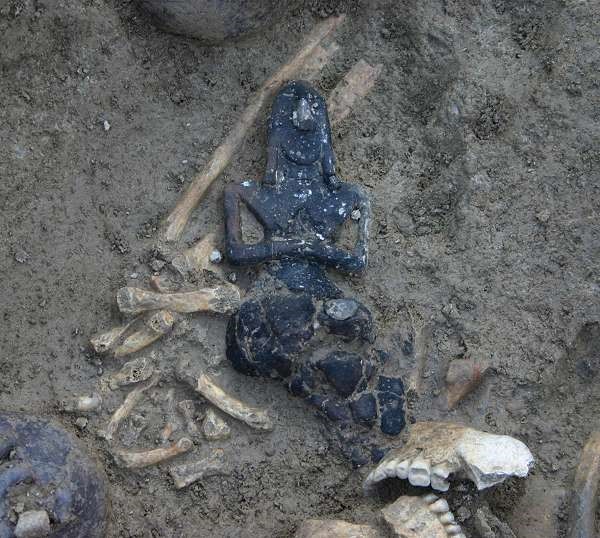
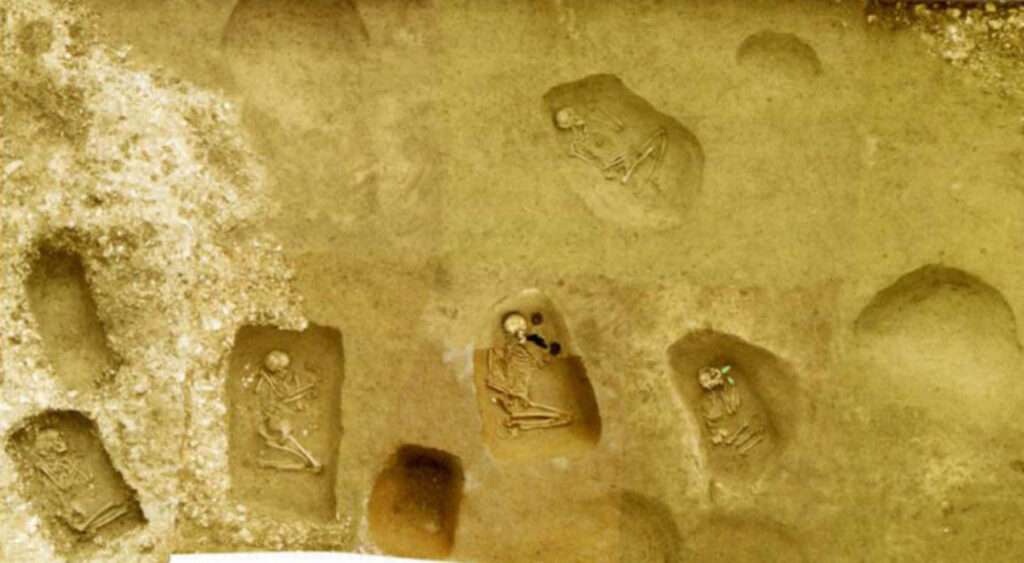
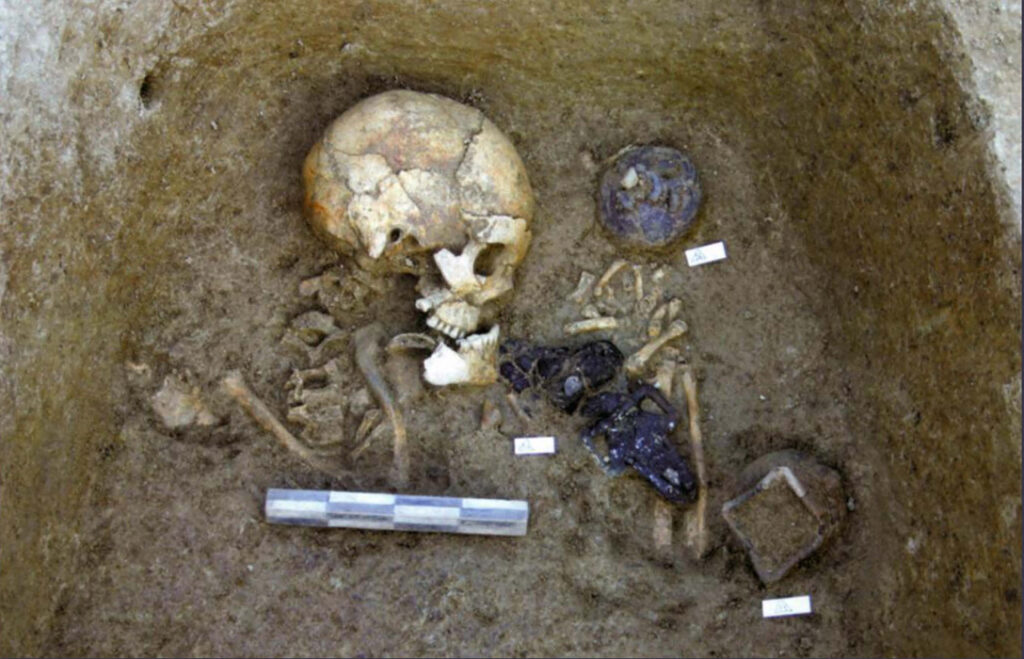
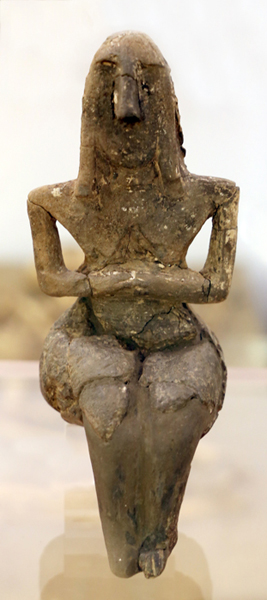
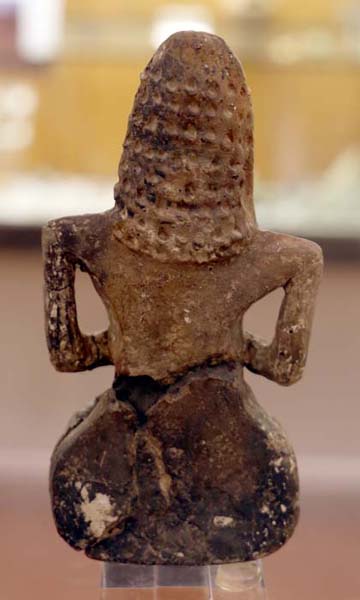

Historical notes
The discovery took place during a preventive archaeological excavation, financed by the owner of the building site, Mr. Bruno Cavalieri, owner of the Coris Srl Company. Previously, in that area findings referable to the Bronze Age had been identified, therefore the Superintendency for Archaeological Heritage of Emilia Romagna had ordered the execution of preventive excavations at the start of the works on the construction site involving the construction of two new buildings (subsequently completed). The excavations were carried out by the Soc. Coop AR/S Archeosistemi of Reggio Emilia, in the persons of Giorgia Fontana, Massimiliano Cova, Silvia Maggioni, Fabrizio Pavia, under the scientific direction of the archaeologist Maria Bernabò Brea (official of the Superintendence for Archaeological Heritage of Emilia Romagna) and the anthropologist Loretana Salvadei. The investigations ascertained that, with reference to the Bronze Age, there were no further finds, but under this layer, about 1,50 meters from the current surface, more ancient traces have come to light, attributable to the Neolithic, consisting of structures of a residential type, several post holes arranged in short alignments, a couple of hearths, a large pit and the necropolis not far away with the burials consisting of oval-shaped pits inside which the deceased lay in a flexed position, in lateral decubitus on the left side. At first, the skeleton from the tomb of the Vicofertile woman was recognized as having masculine characteristics, especially as regards the physiognomy of the facial bones. Only following extensive investigations on the pelvic bones was it possible to determine the woman's sex with certainty.
CARD
LATEST PUBLISHED TEXTS
VISIT THE FACTSHEETS BY OBJECT

